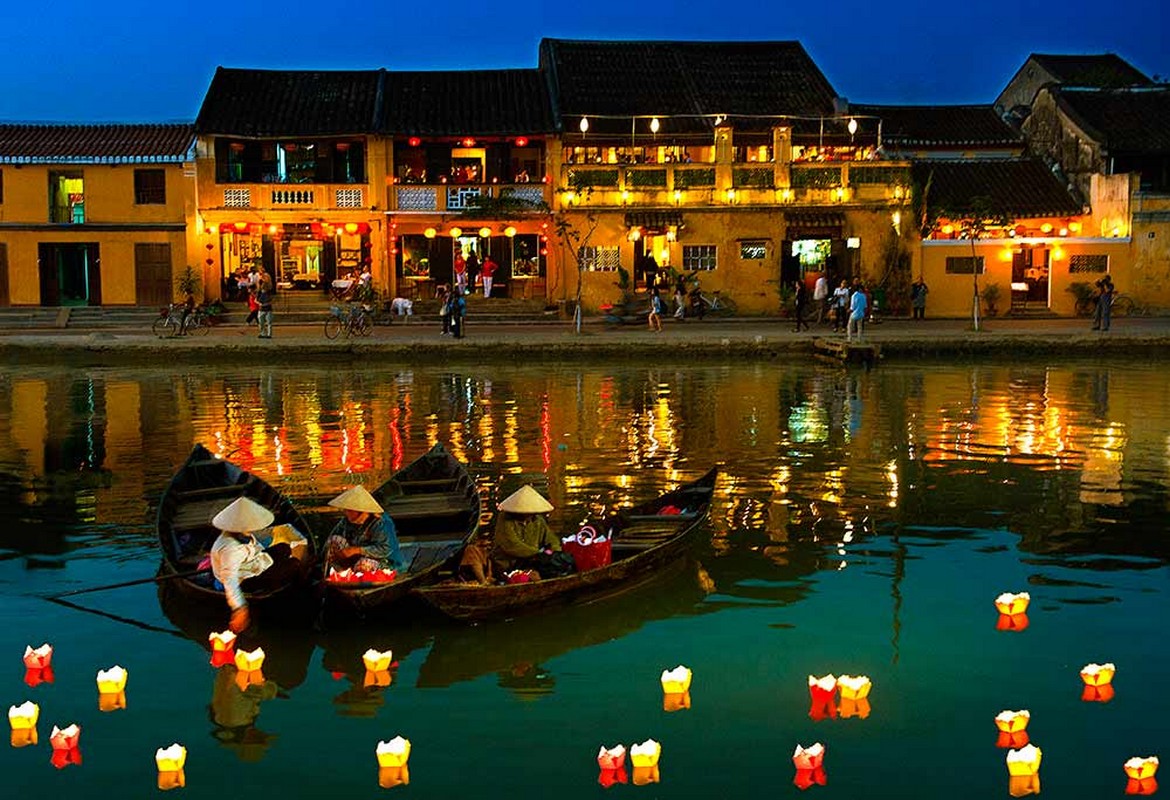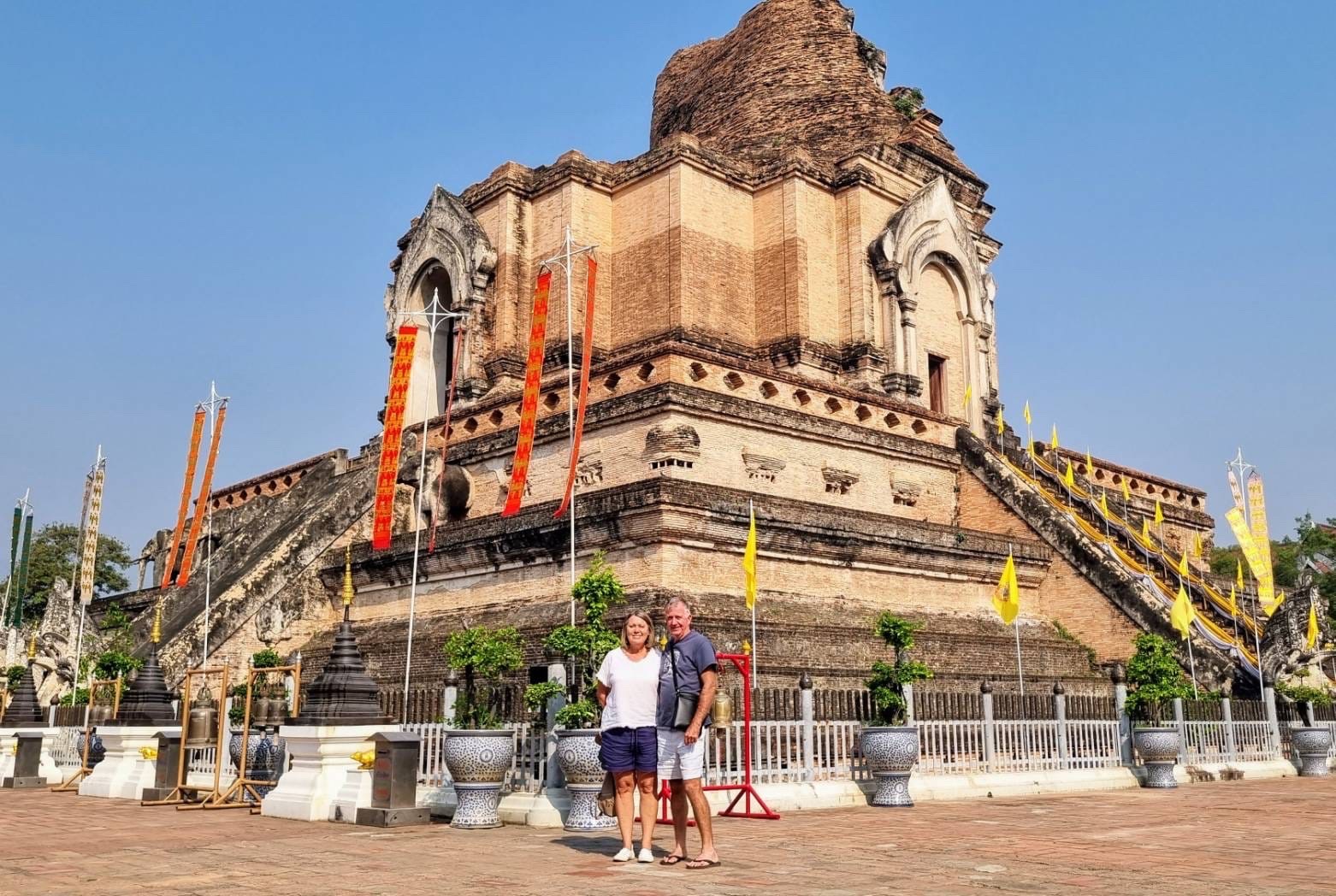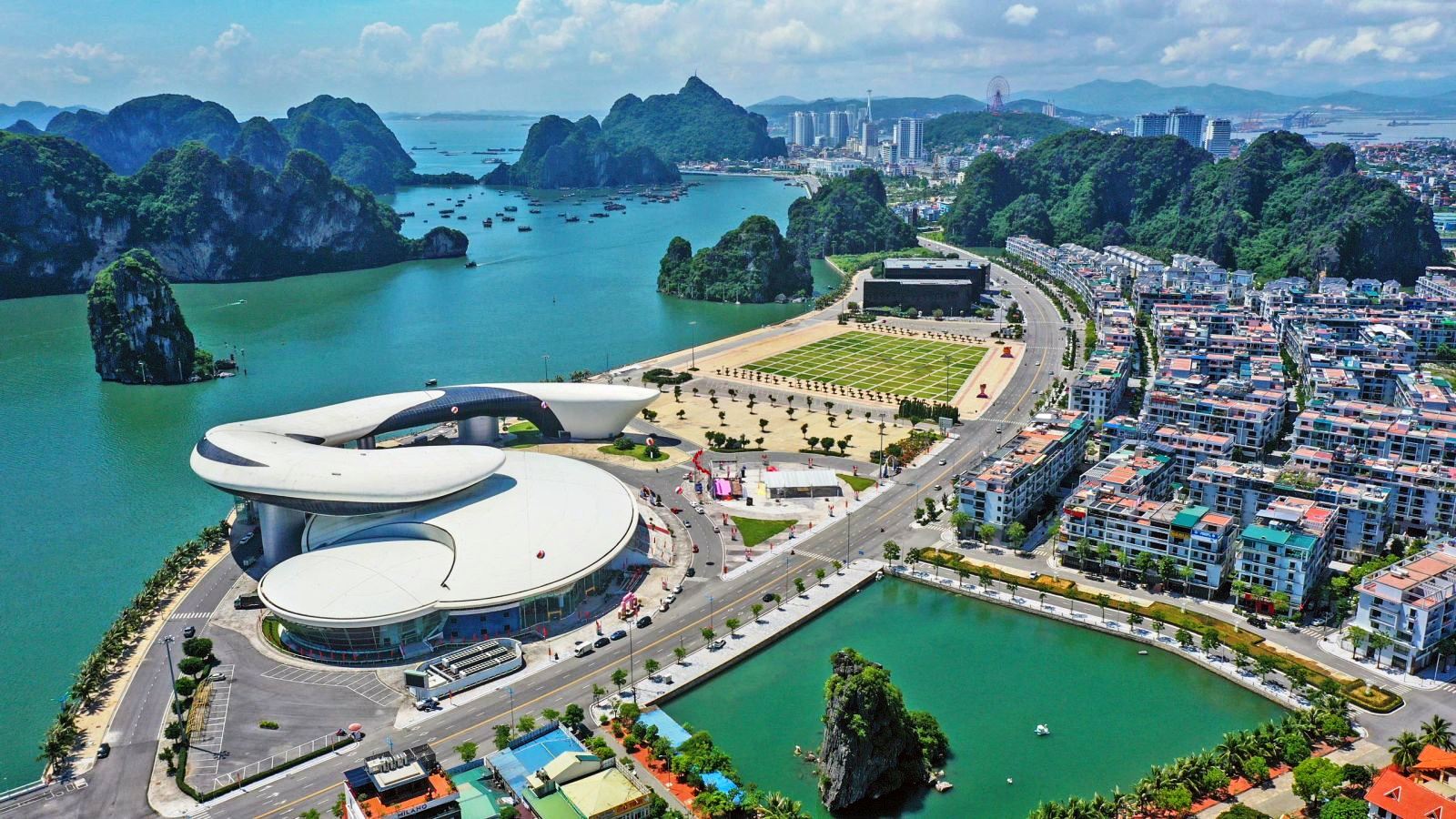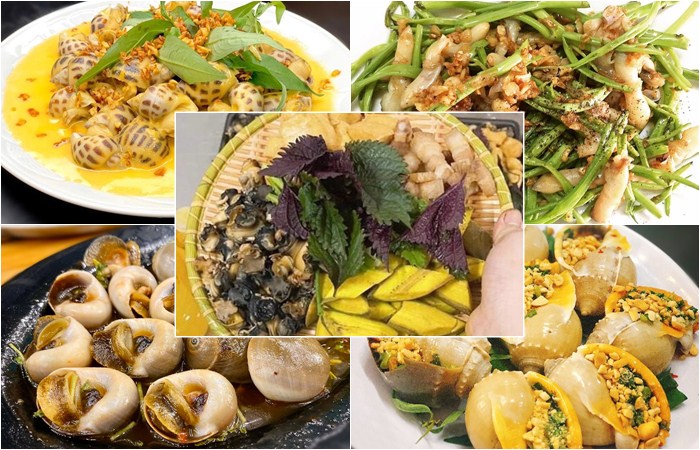Imagine yourself standing amidst emerald rice terraces cascading down majestic mountains. Breathe in the crisp mountain air, invigorated by the vibrant tapestry of nature. This is Sapa, a town nestled in the heart of Vietnam’s Hoang Lien Son Mountains, beckoning you with its breathtaking beauty. But with seasons painting the landscape in ever-changing hues, deciding on the best time to visit Sapa can feel like a delightful puzzle. Fear not, fellow adventurer! Vietnam Tour 247 will unveil Sapa’s seasonal secrets, helping you craft your perfect escape.
Best Time to Visit Sapa Vietnam
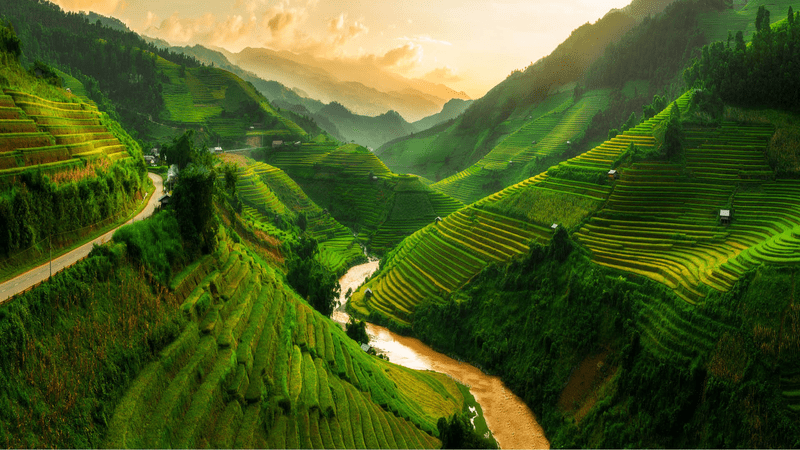
Choosing the best time to visit Sapa Vietnam depends on what makes your travel heart sing. Here’s a breakdown of each season’s unique charm:
- Spring (March to May): Spring awakens Sapa with a vibrant kiss. Picture pleasant temperatures (around 15°C to 28°C or 59°F to 82°F) and occasional light showers. Wildflowers burst into a colorful spectacle, blanketing the valleys and hillsides in a floral fiesta.
Pros: Picture-perfect weather, stunning wildflowers, fewer crowds compared to peak season.
Cons: Occasional rain showers, rice paddies still young.
- Recommended Activities: Explore the awakening beauty of Sapa with moderate hikes. Take in the breathtaking display of wildflowers and immerse yourself in the fresh spring air. Visit Cat Cat Village or Lao Chai Village to experience the rich culture of ethnic minority groups.
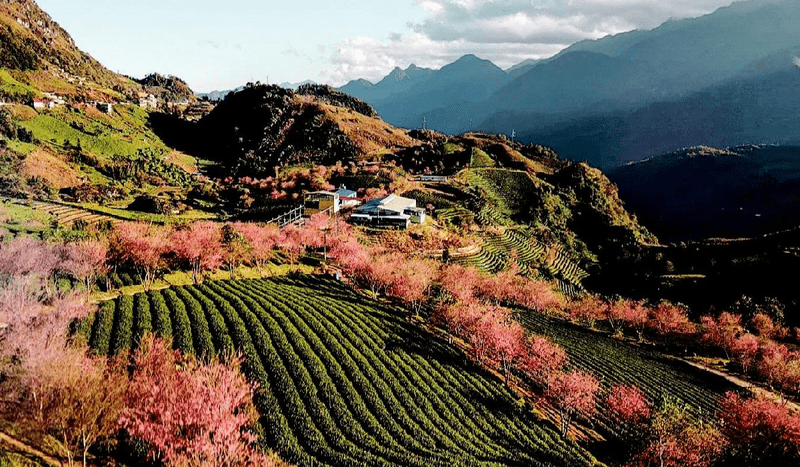
- Summer (June to August): Summer brings warmer days, averaging between 20°C (68°F) and 32°C (90°F), with the occasional afternoon thunderstorm. Don’t let the rain dampen your spirits; the lush greenery flourishes under the warm sun, creating a verdant wonderland.
Pros: Lush green rice terraces, ideal for those who love warm weather.
Cons: Afternoon rain showers possible, higher humidity.
- Recommended Activities: Embark on scenic motorbike tours or bicycle rides through the verdant rice paddies. Explore hidden waterfalls like Thac Bac (Silver Waterfall) or discover historical sites like the Ham Rong Mountain Resort. Be sure to pack rain gear for those afternoon showers.
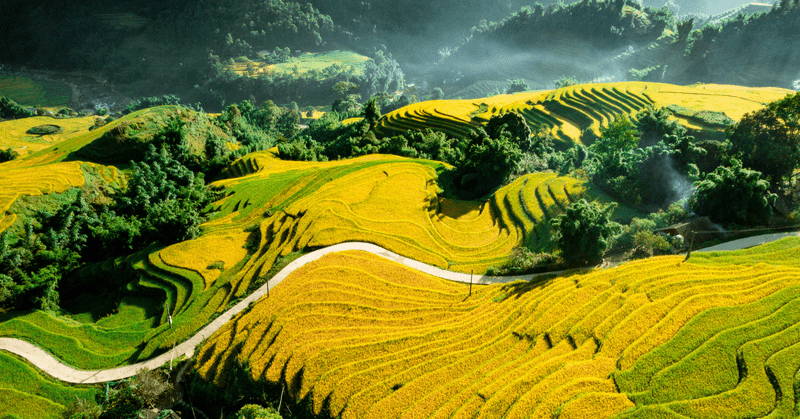
- Autumn (September to November): Ah, autumn, arguably the best time to visit Sapa. The weather transitions to a cool and dry period, with temperatures ranging from a refreshing 15°C (59°F) to a comfortable 28°C (82°F). This is when the famed rice terraces transform into a golden masterpiece, a breathtaking spectacle that draws visitors from across the globe.
Pros: Perfect weather for exploring, golden rice terraces at their peak, ideal for trekking.
Cons: Peak season with larger crowds and potentially higher prices.
- Recommended Activities: Witness the awe-inspiring golden rice terraces in all their glory. Take a challenging trek through the breathtaking Mu Cang Chai valley or conquer the majestic Fansipan peak, the highest mountain in Vietnam (weather permitting). Immerse yourself in the vibrant Sapa Rice Festival, celebrating the year’s harvest.
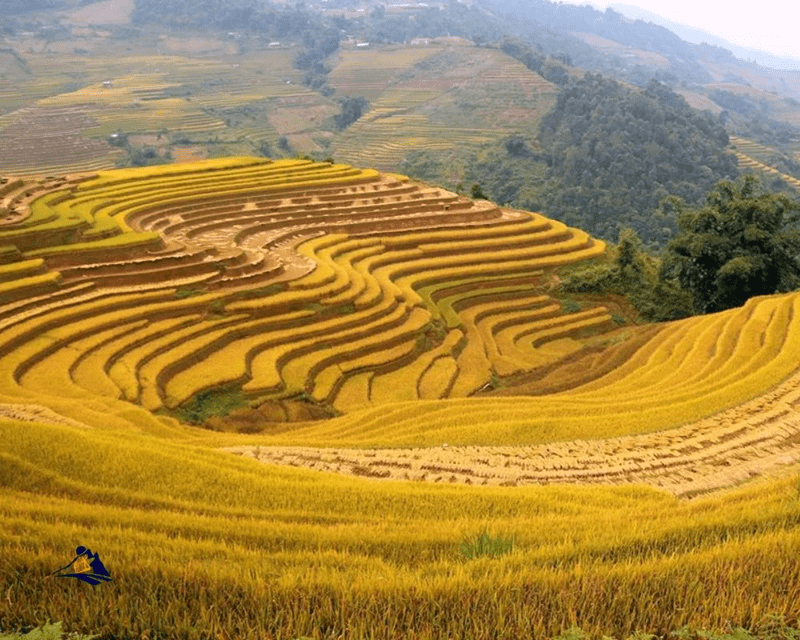
- Winter (December to February): Winter in Sapa can be refreshingly chilly, with temperatures dropping as low as 5°C (41°F) and occasional frost. This season offers a unique perspective, with mist blanketing the valleys and the peaks sometimes dusted with snow. However, be prepared for colder temperatures and potential road closures due to fog.
Pros: Fewer crowds, a chance to see snow-capped mountains (occasionally).
Cons: Coldest weather, rice terraces are dormant, some activities may be limited.
- Recommended Activities: Experience the serene beauty of Sapa with fewer crowds. Take a leisurely stroll through the misty valleys and enjoy the tranquility of the winter landscape. Visit the Sapa Old Town for a cozy escape and explore the local markets. Be sure to pack warm clothes for the chilly temperatures.
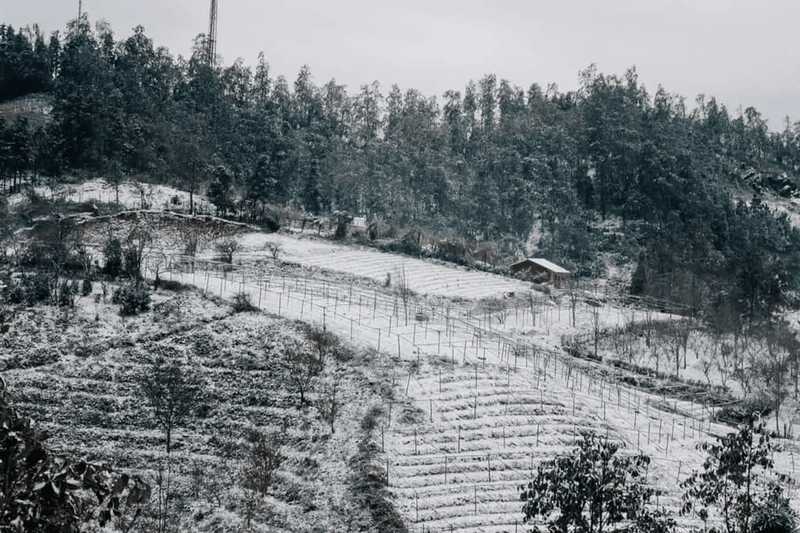
Monthly Weather in Sapa
Sapa boasts a subtropical highland climate, offering four distinct seasons, each with its own charm:
- Spring (March to May): Pleasant temperatures with occasional light showers.
- Summer (June to August): Warm temperatures with occasional afternoon thunderstorms.
- Autumn (September to November): Cool and dry weather, ideal for outdoor activities.
- Winter (December to February): Chilly temperatures with occasional frost and potential fog.
| MONTH | SEASON | AVERAGE TEMPERATURE (CELSIUS) | AVERAGE TEMPERATURE (FAHRENHEIT) | DESCRIPTION |
| March | Spring | 18 | 64 | Pleasant temperatures with occasional light showers. Wildflowers bloom. |
| April | Spring | 20 | 68 | Comfortable temperatures with occasional light showers. Wildflowers are still vibrant. |
| May | Spring | 23 | 73 | Warmest month of spring. Light showers are possible. Good time for hiking. |
| June | Summer | 25 | 77 | Warmest month overall. Lush green rice terraces. Afternoon rain showers are possible. |
| July | Summer | 26 | 79 | Hottest month. Lush green rice terraces. Afternoon rain showers likely. |
| August | Summer | 25 | 77 | Warm with occasional rain showers. Lush green rice terraces. |
| September | Autumn | 23 | 73 | Transition month with pleasant temperatures. Early stages of golden rice terraces. |
| October | Autumn | 20 | 68 | Ideal month to visit Sapa. Peak season for golden rice terraces. Cool and dry weather. |
| November | Autumn | 18 | 64 | Cool and dry weather. Late stages of golden rice terraces. |
| December | Winter | 13 | 55 | Colder temperatures with occasional frost. Rice terraces dormant. Misty valleys. |
| January | Winter | 10 | 50 | Coldest month. Rice terraces dormant. Misty valleys with a chance of snow on peaks. |
| February | Winter | 12 | 54 | Gradually warming temperatures. Rice terraces dormant. Misty valleys. |
Best Time to Visit Sapa Rice Fields
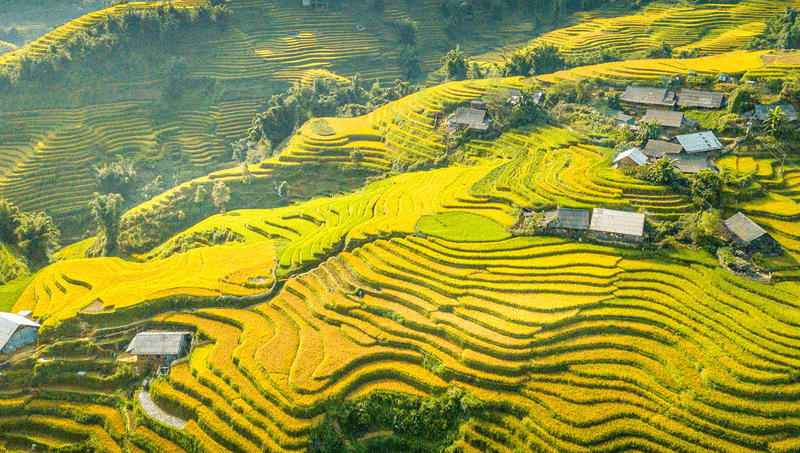
The rice terraces are undoubtedly Sapa’s crown jewel, and the timing of your visit can significantly impact your experience. Here’s a closer look at the rice terraces throughout the year:
- March to May (Spring): Spring brings vibrant green rice paddies to life. This is a fantastic time to witness the early stages of rice growth and experience the refreshing spring weather.
- June to August (Summer): The rice terraces transform into a verdant spectacle during the summer months. Imagine trekking amidst these lush green paddies, creating an unforgettable backdrop for your adventure.
- September to November (Autumn): This is the golden period for the rice terraces, widely considered the best time to visit Sapa for this breathtaking spectacle. From late September to mid-October, the rice ripens, transforming the landscape into a sea of gold. Witnessing this during a trek through the rice paddies is an experience that will stay with you forever.
- December to February (Winter): The rice terraces lie dormant during winter, with the paddies often filled with water reflecting the surrounding mountains. While not as visually striking, the winter landscape offers a serene and peaceful atmosphere.
Read more: Exploring the top 15 best travel agency in the world
Frequently Asked Questions About the Best Time to Visit Sapa
Q: I love cooler weather. When should I visit Sapa?
Spring (March to May) or late autumn (November) might be your sweet spot! You’ll find fewer crowds and potentially snag some fantastic deals on accommodation during these shoulder seasons. Plus, if summer heat makes you wilt, the cooler temperatures will be a breath of fresh air. Imagine exploring the rice paddies bathed in the gentle spring sunlight or taking a hike with crisp autumn air invigorating your senses. Sounds pretty dreamy, right?
Q: Can I trek in Sapa year-round?
Absolutely! Sapa’s beauty is there for you to discover all year long. However, the best time to visit Sapa for trekking adventures is definitely during the dry seasons – spring (March to May) and autumn (September to November). These periods offer clear skies and comfortable temperatures, perfect for conquering those mountain trails. Just remember, the trails can get muddy during the rainy summer months, and some higher-altitude paths might be off-limits due to snow and ice in winter.
Q: Are there any festivals I shouldn’t miss?
The Sapa Love Market, held annually in April, is a one-of-a-kind cultural experience. Young people from surrounding ethnic minority groups gather to find love. Imagine the vibrant energy as the air fills with traditional music and colorful costumes! The Sapa Rice Festival, held in September, celebrates the rice harvest with exciting performances and festivities. Immerse yourself in the joy and gratitude of the locals as they celebrate this vital crop.
Q: What are some essential things to pack for Sapa?
As mentioned earlier, pack layers for unpredictable weather. Here’s a quick checklist:
- Rain gear: A poncho or raincoat is crucial, especially during the rainy season.
- Comfortable walking shoes: Opt for shoes with good traction, as you’ll likely be doing a lot of walking and exploring uneven terrain.
- Warm clothes: Even in summer, evenings can get chilly, so pack a sweater or fleece jacket.
- Hat and sunglasses: Sun protection is important year-round.
- Insect repellent: Especially during the summer months, mosquitos can be a nuisance.
Q: Is it safe to travel to Sapa alone?
Sapa is generally considered a safe destination for solo travelers. However, it’s always wise to be cautious and take precautions, just like anywhere else you travel. Here are some tips:
- Let someone know your itinerary and where you’re staying.
- Be aware of your surroundings and belongings.
- Avoid isolated areas at night, especially if you’re unfamiliar with the terrain.
- Trust your gut instinct and avoid situations that make you feel uncomfortable.
Q: What currency is used in Sapa?
The Vietnamese Dong (VND) is the official currency in Sapa. While some tourist spots might accept US Dollars (USD), it’s always best to have VND on hand. ATMs are readily available in Sapa to withdraw cash.
With careful planning and this guide as your compass, you can unlock the magic of Sapa and experience an unforgettable adventure in this captivating corner of Vietnam. So, start dreaming of your Sapa escape, and get ready to be enchanted!
Read more: Heaven’s Gate Sapa: A Guide To Vietnam’s Utopia


